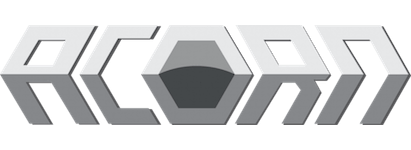
There are many pressing questions that manufacturing industry professionals may have about supply chain management. Here are a few common ones, with a simple, direct explanation of how they can be addressed, and what avenues to explore.
Supply chain management is a critical issue for manufacturers. How can common supply chain challenges and production issues be dealt with through best practice, technology and strategic partnerships. Read on for the 101.
What are the top supply chain questions industry professionals want to know in manufacturing?
1. How can we increase efficiency and reduce costs in our supply chain?
The million dollar question! To increase efficiency and reduce costs in the supply chain, companies may implement process improvements such as inventory management, vendor managed inventory, and outsourcing warehouse operations to third-party logistics providers.
2. How can we improve communication and collaboration with our suppliers and partners?
The right partners and suppliers here are crucial, along with their openness and attitudes to transparency and information sharing. Improving communication and collaboration with suppliers and partners can be achieved through SOPs (standard operating procedures) related to regular meetings, joint planning, as well as through technology such as MRP/ERP systems.
3. How can we mitigate risks and vulnerabilities in our supply chain?
We've just been through a Pandemic, and supply chain issues are still a real challenge globally. Risks and vulnerabilities in the supply chain still top-of-mind, and can be mitigated by conducting thorough risk assessments, implementing contingency plans, and using supply chain visibility and traceability tools.
4. How can we use technology to optimise and automate supply chain processes?
Companies can use technology such as smart manufacturing, industrial vending, and IoT to optimise and automate supply chain processes, improving efficiency and reducing costs. Master suppliers can leverage and manage a network of suppliers for you for streamlined components supply and procurement. Trusted supply chain partners to collaborate and cooperate with is a key consideration.
5. How can we improve visibility and transparency in our supply chain?
Supply chain visibility and transparency has come on in leaps and bounds with increasing digitisation within the industry. These priorities can be achieved through a variety of rapidly iterating technologies within real-time tracking, supplier performance monitoring, and supply chain analytics.
6. How can we adapt to changing market demands and shifts in customer preferences?
Market and environmental conditions continue to fluctuate, and client demands accelerate and change alongside these. Adapting to these changing market demands and customer preferences can be achieved strategically through sales and operational planning, product design for assembly, and systems requirements processing.
7. How can we balance the need for flexibility and agility with the need for stability and predictability in our supply chain?
The ability for an organization to adapt, to improve, iterate and reinvent, is key. Balancing flexibility with predictability, and agility with stability, can be achieved through inventory analysis and planning, flexible production methods and outsourcing, along wtih lean manufacturing principles.
8. How can we build and maintain strong, long-term relationships with our suppliers?
Carefully audit and assess partners. Make sure attitudes and relationship values align. Building and maintaining strong, long-term relationships with suppliers can be achieved through regular communication, fair contracts, and collaborative decision-making, with mutual appreciation of expertise and areas of excellence.
9. How can we ensure that our supply chain is sustainable and environmentally responsible?
ESG (environmental, social, governmental) concerns and compliance continues to increase in importance and in both legal and preferential requirements. Ensuring a sustainable and environmentally responsible supply chain can be achieved through eco-friendly sourcing, reducing waste, and implementing a robust sustainability strategy. Are you supply chain partners geared up for this, and have these as core values and responsibilities?
10. How can we stay up-to-date with the latest best practices and trends in supply chain management?
It can feel like another full time job along with the one you already do. But keeping up-to-date with the latest best practices and trends in supply chain management can be achieved through continuous education, industry events, and networking. It helps if you have specialised supply chain partners whose core responsibilities and expertise align and augment with your own capabilities and knowledge.
11. How can we improve our forecasting accuracy to better manage inventory levels and reduce waste?
Too many times manufacturers neglect inventory and upstream supply chain, as expertise and more immediate concerns are with the design, production, delivery, marketing and servicing of their core products. Often easy wins are left on the table for improving forecasting accuracy to better manage inventory levels and the reduction of waste. These may better be achieved through data analysis, demand forecasting, and close collaboration with suppliers and customers.
12. How can we increase visibility and traceability throughout our supply chain to improve risk management and compliance?
A question that directly affects raw business performance, along with environmental and legal compliance, in addition to sustainability/ethical issues: improving visibility and traceability throughout the supply chain can be achieved through intentional process design, real-time tracking systems, comprehensive reporting, and industry standard protocols such as EDI. Interoperability and data sharing between supply and logistics partners is crucial.
13. How can we implement lean manufacturing principles to reduce waste and increase productivity?
Improving the efficiency of the manufacturing process by implementing lean manufacturing principles to reduce waste and increase productivity can be achieved through initiatives such as value stream mapping, process improvement, and continuous improvement programs (5S, Kanban, Six Sigma, for example).
14. How can we use technology, such as IoT, AI and AR/XR, to improve supply chain operations and decision-making?
Technologies such as IoT (Internet of Things), AI (artificial intelligence), and AR/XR (augmented/mixed reality) can be used to improve supply chain operations and decision-making by providing real-time data and predictive analytics, along with augmentation of the assembly and production process. Supply chain technologies are evolving as part of 4IR (Fourth Industrial Revolution) initiatives, the maturation and increasing affordability and ubiquity of newer technologies that were once described as emerging or novel, but have now truly emerged and are ready for action.
15. How can we build and maintain strong relationships with suppliers to ensure timely delivery of high-quality materials?
Personal relationships are still key, however global and digitised industry and business becomes. Building and maintaining strong relationships with suppliers can be achieved through regular communication, performance monitoring, and collaboration on joint initiatives. It starts with finding a trusted supply chain partner.
16. How can we handle disruptions in the supply chain, such as natural disasters or supplier issues, effectively and efficiently?
Planning and policies need to be in place. Disruptions in the supply chain can be handled effectively and efficiently through contingency planning, diversifying suppliers (utilising a master supplier or logistics partner that leverages a larger supplier network), as well as real-time monitoring and information sharing that is early and often. Building production flexibility through outsourced warehousing, or flexible kitting and assembly capacity with a 3PL/supply chain partner allows a company to ramp production up/down according to demand.
17. How can we ensure the sustainability of our supply chain and reduce our environmental impact?
Ensuring the sustainability of the supply chain and reducing environmental impact can be achieved through eco-friendly sourcing, reducing waste, and implementing sustainable operations and logistics. Netzero objectives can be achieved through carbon offset and reduction, electrification, and initiatives that reduce and eliminate waste and pollution, along with materials efficiency, substitution and reduction. Every area of the manufacturing and supply chain needs to be considered and factored in.
18. How can we leverage global sourcing and logistics to expand our market reach and increase competitiveness?
High level strategic decisions need be considered in how local or globalised your sourcing and logistics should be. We have seen increased near-shoring trends and resilience measures due to global supply chain issues post-Pandemic. Overall, whether global or local, leveraging the sourcing and logistics to expand market reach and increase competitiveness can be achieved through strategic planning, market analysis, and efficient logistics operations (including with aftermarket and servicing support).
19. How can we continuously improve our supply chain processes and operations to stay ahead of industry trends and changes?
Continuously improving supply chain processes and operations to stay ahead of industry trends and changes can be achieved through continuous improvement programs, benchmarking, and collaboration with industry experts, specialist logistics partners, and high quality suppliers. Regular analysis and review of production processes and redesign of these is crucial to achieving the best results for your company.
We hope find this rundown on some of the most popular queries on manufacturing supply chain useful, and it helps you with pointers to our appropriate services.
Ready to find out more?
Drop us a line today to explore our services










